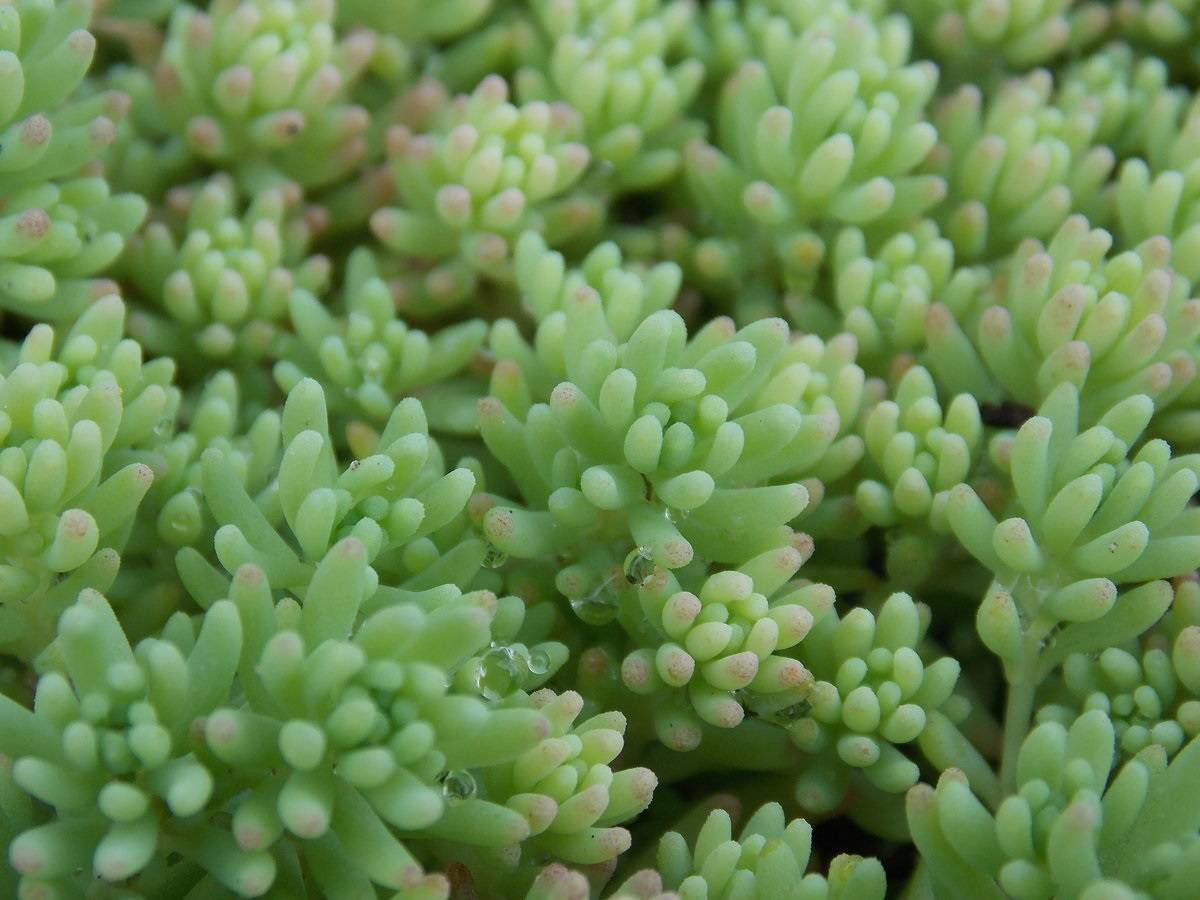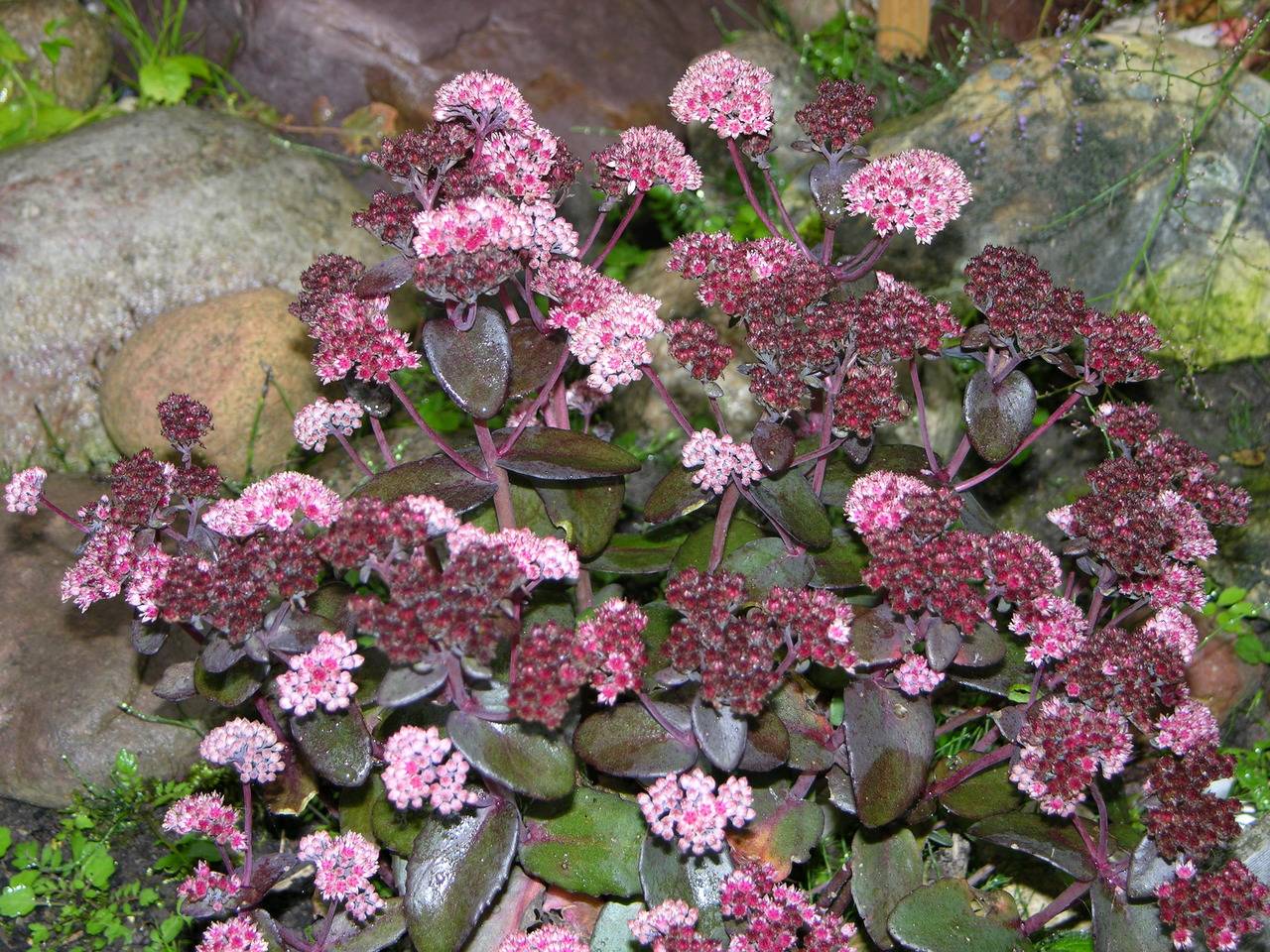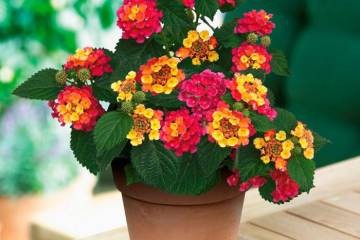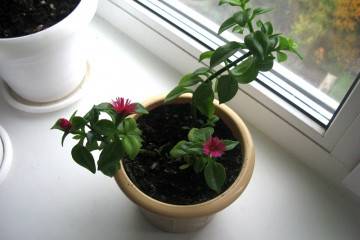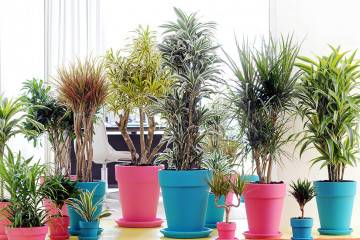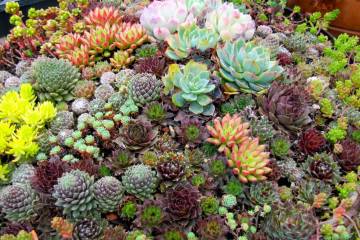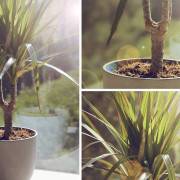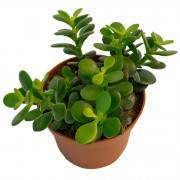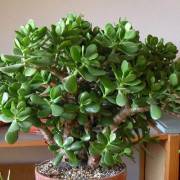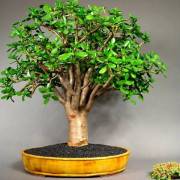Sedum - planting and care, reproduction
Content:
In landscape design, not only familiar plants are used, but also succulents. Even a beginner will master the cultivation of stonecrop. This plant comes in different varieties, but in any case, its unpretentious fleshy flowers will make any composition original.
Characteristic
The plant belongs to undersized succulents. All representatives are conventionally divided into two groups - heat-loving and frost-resistant. The former can be grown outdoors only as annuals.
Sedum is found naturally in Africa, South America and arid areas. It actively grows in width, branches beautifully, and can completely cover the soil. Leaves are oval or ovoid, they can be blue, pink, gray.
The color is influenced not only by the variety, but also by the conditions of detention. In the middle of summer, stonecrop begins to bloom with umbrella inflorescences. They are painted yellow, red or white. The sedum plant reaches a height of 25 cm. It blooms with large caps of inflorescences that look like stars. It attracts bees well.
In the open field, White sedum grows well. Its leaves are cylindrical, fleshy, green. With age, the hue changes to purple. At the end of spring, white stars appear.
The Kamchatka variety perfectly spreads along the slopes and creates the illusion of a vegetable carpet. The flowers are yellow with an orange tint.
Sedum: planting and care
Sedum tolerates reproduction easily. For this he uses seeds or cuttings. Each method has its own pros and cons.
Seeds
Seed material is bought in a specialized store or harvested independently. For this, after flowering, the fruits are waiting for the ripening. Then the seeds are taken out of the pulp.
It is easy to propagate sedum in this way. The seed is planted in mid-April. For soil, take two parts of garden soil and one part of sand. The distance between the seeds is 3 cm. The container is covered with glass or foil from above.
Seedling
You can buy small scions or ask to divide the bush. Sedum easily tolerates this procedure and germinates well in a new place. For division, sedum is carefully dug out of the ground and divided into several parts.
Seedlings do not require special care. It is enough to water it and monitor the moisture level. With proper care, seedlings grow quickly.
Cuttings
Stonecrop propagation by cuttings is practiced. To do this, cut off a small twig, dry it and place it in the ground. You can use whole sheets together. After 2-3 weeks, the parts will develop roots and give the plant the strength to grow.
The easiest way to breed sedum is by dividing and germinating parts. Succulents have a high survival rate. Therefore, if the owner is faced with the problem of how to propagate sedum, then it is better for him to choose cuttings.
Watering and soil cultivation
Succulents do not require special care, they are able to withstand short-term drought. In the summer, there is enough natural precipitation; artificial irrigation is needed only in case of a prolonged absence of precipitation.
Once a week, the soil is carefully loosened, that is, dug up - this facilitates the access of oxygen to the roots.The process allows you to kill weeds. Growing sedum is not such a difficult business and is available even for beginners.
Top dressing
In order for the plantings to grow well, they are provided with useful minerals. In the spring, sedum is watered with organic fertilizer (diluted mullein) or ready-made complex formulations are used. Top dressing is introduced once a week.
In the fall, the procedure is repeated. Instead of mullein, it is allowed to use liquid bird droppings. Fresh manure cannot be used as it burns succulents.
Perennial plants retain their strength and beauty only with proper care. Fertilizers are needed to replenish the composition of the soil, since over time the soil is depleted. In this case, the sedum will have nowhere to take the necessary substances.
Transfer
At home, sedum is rarely transplanted. The succulent grows slowly and therefore does not need frequent transplants. In the open field, sedum can easily stay in one place for up to five years. After this period, the plant is cut, rejuvenated, transplanted to another site. After the transfer, sedum is abundantly fertilized with complex mineral dressings.
In the spring, they dig holes for transplanting, pour humus into them and place a seedling in the hole. An interval of 15 cm is maintained between plants.
The owner may be faced with the problem of how to transplant sedum at home. To do this, it is enough to prepare a new pot, soil for succulents and transfer the sedum to a new container.
Pruning
In a garden, the plant grows rapidly. Therefore, to form a beautiful crown, pruning is carried out. To do this, shears remove long stems, dry branches, damaged leaves. The length is removed by 1/3. Collected cuttings can be used for propagation.
Perennial varieties are pruned every year in spring or fall. There is no need to be afraid of this process, as it allows you to increase branching. This is especially important for ground cover varieties, as they must grow rapidly in width.
Pests and diseases
Stonecrop caterpillars can appear frequently. Pests are attracted by the succulent leaves of succulents. If there are too many of them, the plant will die. Therefore, sedums must be treated with special preparations "Intavir" or "Iskra-M".
With waterlogging of the soil, a fungal disease develops - gray rot. The sedum is hard to tolerate this disease. Therefore, the affected areas are immediately removed, and the remaining specimens are treated with fungicides.
Bloom
When optimal conditions are created, the sedum begins to bloom in the middle of summer. In order to prolong this process, the level of soil moisture is monitored - it should not dry out for a long time.
Flowers smell strong and attract bees - this must be taken into account and not be afraid of insects. During this period, the plants should not be pruned or transplanted.
Preparing for winter
In September, the number of watering is reduced, sedum is pruned. Top dressing continues to be given until mid-October. At this time, you should not decide how to plant sedum in a new place.
It is advisable to cut off any dried flowers. After that, the sprouts can be covered with warm material or covered with foliage - this will save them from the cold.
It is easy to take care of stonecropping in an apartment. It is enough to reduce watering, daylight hours and put the pot in a cool place (about 10 ° C). The sedum will only undergo a transplant in the spring. Until that time, do not touch it.
Use in design
Succulents have long become full-fledged participants in plant compositions. They are used on slides as ground cover specimens. Large varieties can be planted as hedges.
With sedum, you can make a prominent area.To do this, choose varieties with bright foliage. They will immediately grab attention. A combination of different varieties is allowed. It is easy to care for stonecrop and therefore the plant is loved by many gardeners.
If you plant standing and creeping sedums on one slide, you can create beautiful compositions. Feel free to experiment and create unique pairs. Sedum care requires a standard one and it is enough to follow only watering and loosen the soil. All this makes the succulent plant famous among designers. You can decorate the borders of a pond or an artificial lake with it.
Before planting stonecrop in the garden, study the planting and caring for the plant. Otherwise, the composition will quickly wither and deteriorate. Under properly organized conditions of existence, it will delight for several years.
It is important to understand not only the features of sedum succulent, where not everyone knows to plant a plant. He needs a lighted place that will create an increased daylight hours. In the shade, the stems are ugly stretched upward. Therefore, a prominent place in the garden must be found for sedum.
Beneficial features
Stonecrop leaves contain vitamins and tannins. Therefore, they can be used for traditional medicine. Tinctures, decoctions, ointments are made from raw materials.
When using sedum, the body gets rid of inflammatory processes. However, it cannot be used by pregnant women, nursing women and children.
A novice gardener needs to learn everything about sedum, how it multiplies and what care consists of. This will keep the plants in good condition. Succulents easily tolerate non-critical mistakes in maintenance, so they will harmoniously fit into the overall design of the garden.
